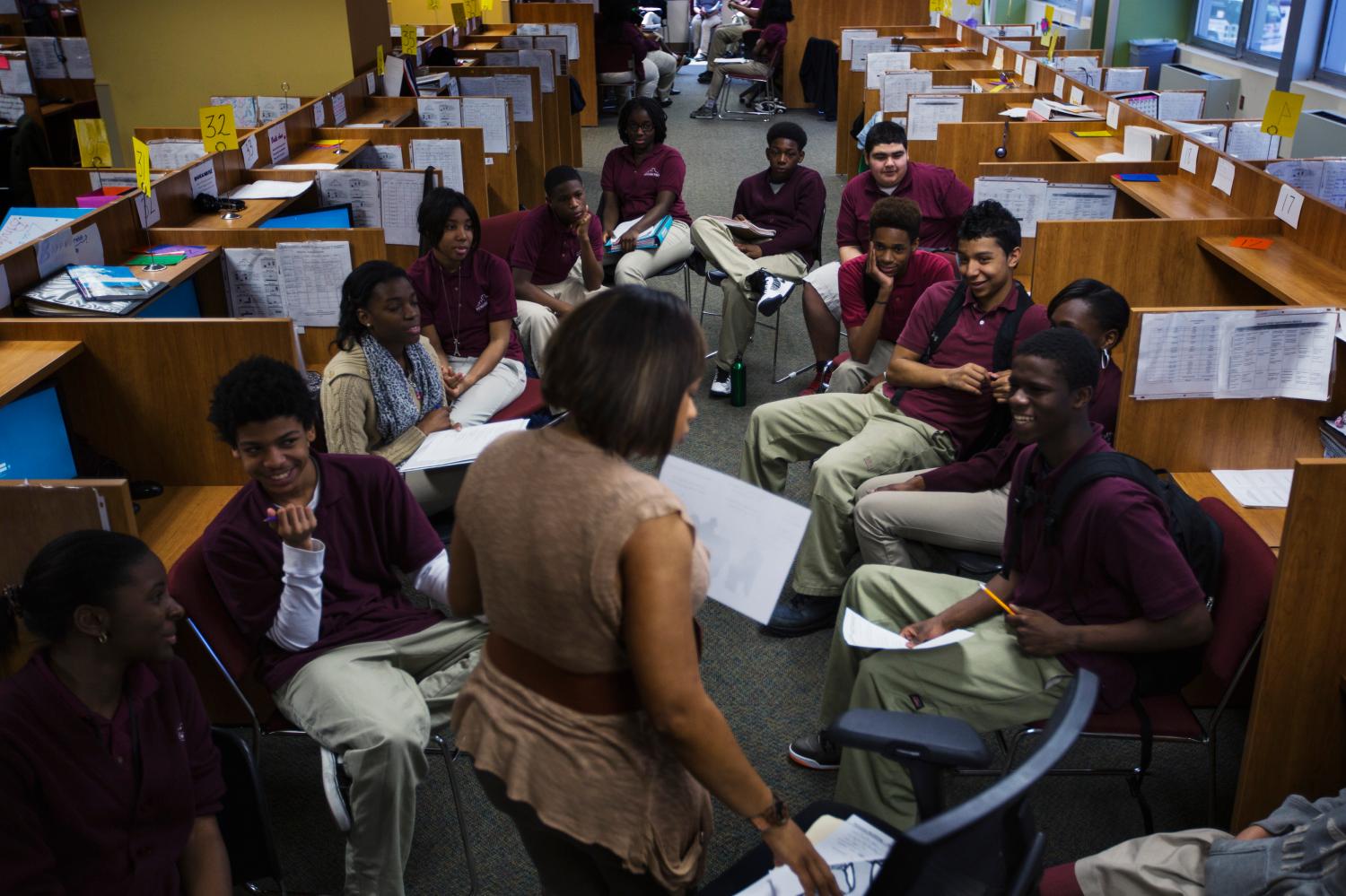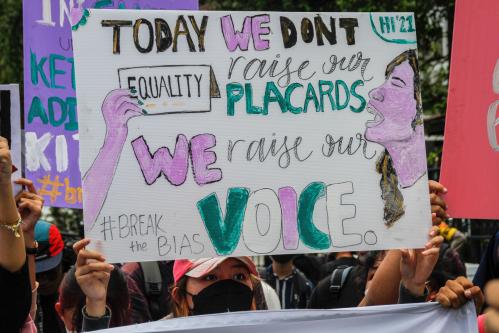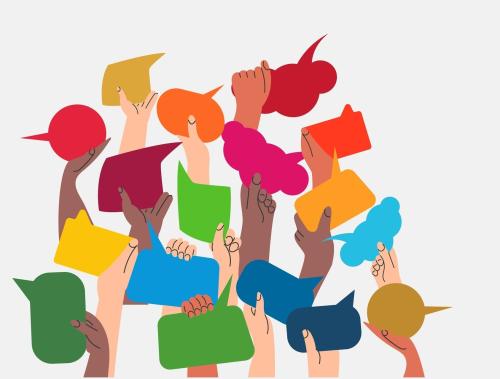In honor of Black History Month, we are revisiting some Brown Center Chalkboard posts that explore the challenges that many African-American students and teachers face in U.S. schools. We categorize these posts in four groups based on their focus: achievement/opportunity gaps, implicit bias, teacher diversity, and school discipline.
Achievement and opportunity gaps
- Michael Hansen, Elizabeth Mann Levesque, Diana Quintero, and Jon Valant analyze 2017 NAEP scores to determine how achievement gaps are changing. They describe how racial achievement gaps remain large nationwide, but are slowly declining.
- Howard Fuller, former superintendent of Milwaukee Public Schools, observes Martin Luther King Day with a poignant discourse on the importance of education for marginalized communities.
- Jon Valant and Daniel Newark present results from survey experiments showing that Americans are much more concerned about gaps between wealthy and poor students than gaps between white students and nonwhite students.
- Michael Hartney assesses whether voters in local elections exhibit concerns about racial achievement gaps. Using data from California, he finds that most people voted based on how well, or how poorly, white students were performing in school at the time of the election; students of color had little influence on voting results.
- Michael Hansen and Diana Quintero analyze the “homework gap” among different groups of students, finding that African-American students spend less time completing their homework than white students. They then explore various explanations for why this is the case.
Unconscious bias
- Seth Gershenson and Thomas S. Dee discuss the presence of unconscious bias in the classroom and the role this plays in reinforcing inequities between in- and out-groups.
- Seth Gershenson describes evidence of racial bias in teachers’ expectations—that compared to black teachers, non-black teachers have significantly lower expectations for black students.
- Rachel Baker, Thomas Dee, Brent Evans, and June John discuss their study examining racial, ethnic, and gender bias in how online instructors respond to their students.
- Lillian M. Lowery and Wil Del Pilar describe how, as low-income students of color, they were never expected to succeed in school. They worry that the system continues to send this message to students despite the fact that the student population is becoming more diverse.
- Meredith B.L. Anderson discusses the publication, “A Seat at the Table: African American Youth’s Perceptions of K-12 Education,” which shares the voices of African-Americans involved in education and challenges assumptions about apathy and disengagement.
Teacher diversity
- As part of the Brown Center’s series on teacher diversity in America, Michael Hansen, Li Feng, and Diana Quintero explore the potential of various financial incentives to attract minority individuals into teaching. Hansen and Quintero explore the distribution of minority teachers in the United States, finding that teachers are even more segregated than students are. Hansen and Quintero also document low racial and ethnic diversity among school leaders, although leadership opportunities for black and Hispanic groups appear stronger in education than other industries.
Relatedly, Peter Goff describes the strong relationship between a nonwhite teacher’s decision to work at a school and the race of the principal at that school.
Mary Dilworth, editor of the new volume “Millennial Teachers of Color,” argues that millennials of color have the capacity to effect positive change in the classroom space—if given room to do so.
CC DuBois and Diane Whitmore Schanzenbach discuss the potential of demand-side policies to diversity the teacher workforce. In doing so, they describe the “Rooney Rule,” which requires NFL teams to interview at least one nonwhite candidate for any head coaching vacancy.
School discipline
- Nathan Barrett, Andrew McEachin, Jonathan Mills, and Jon Valant describe their study of student discipline disparities in Louisiana. Their results include evidence of discrimination in the punishments issued when a black student and white student get into a fight at school.
- Tom Loveless discusses school discipline disparities in the state of California and the movement to reduce exclusionary punishments. In his post, Loveless describes a 37.9-percent drop in suspensions between 2012-2015 that spans all major ethnic groups, but fails to reduce the disparities across groups.
- Nora Gordon describes the 2014 Dear Colleague Letter (DCL) on racial disparities in student discipline, then provides an overview of the related research and its implications for discipline policies and practices.
- Following the backpedaling of the Obama administration’s DCL by the School Safety Commission, Michael Hansen and Jon Valant comment on the logic utilized to justify this decision. They argue that the connections between the DCL and school shootings are tenuous at best, and they raise questions about how the federal government is handling its responsibility to protect students’ civil rights.
This collection of research describes some of the many ways in which African-American students and teachers confront challenges in American schools. Although most of these challenges lack an easy solution, carefully examining these issues is a critical step toward determining how to address them.
Grace Breazeale and Jacqueline Lantsman contributed to this post.
The Brookings Institution is committed to quality, independence, and impact.
We are supported by a diverse array of funders. In line with our values and policies, each Brookings publication represents the sole views of its author(s).




